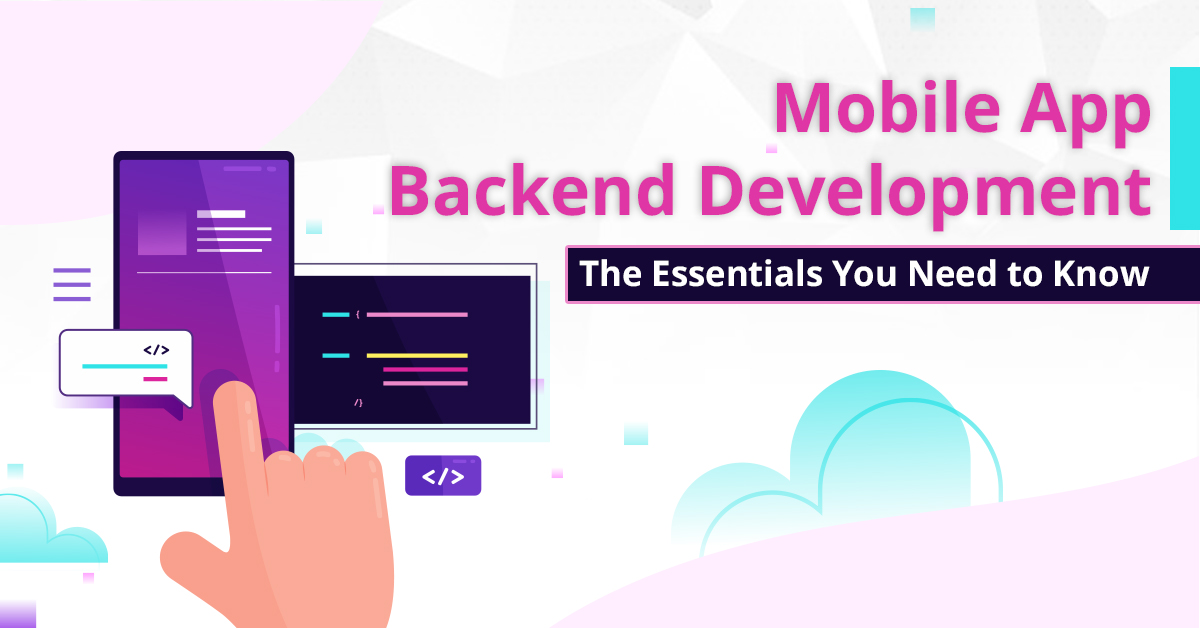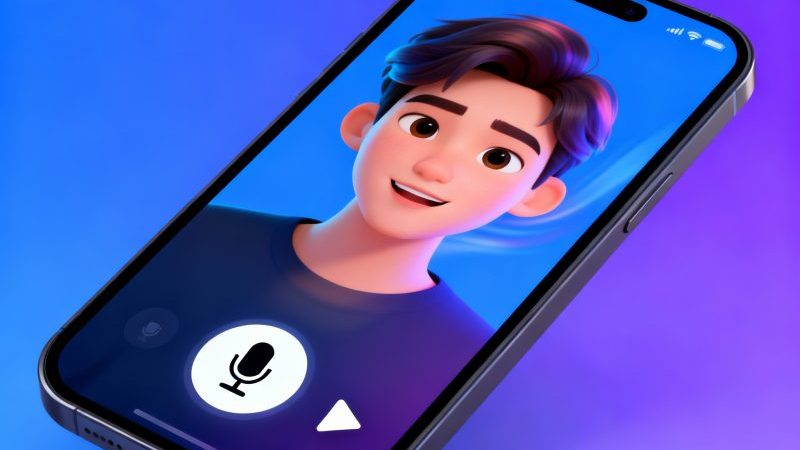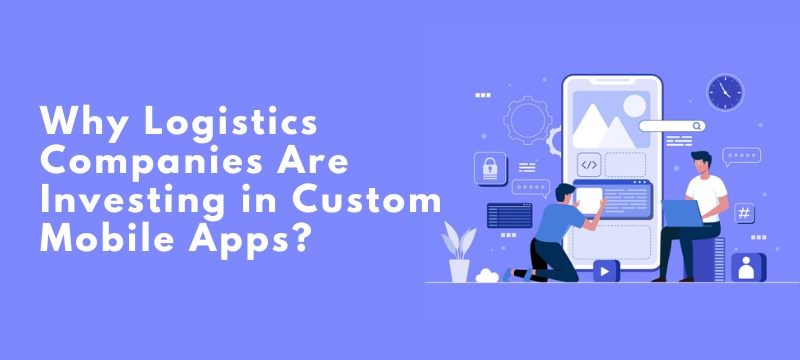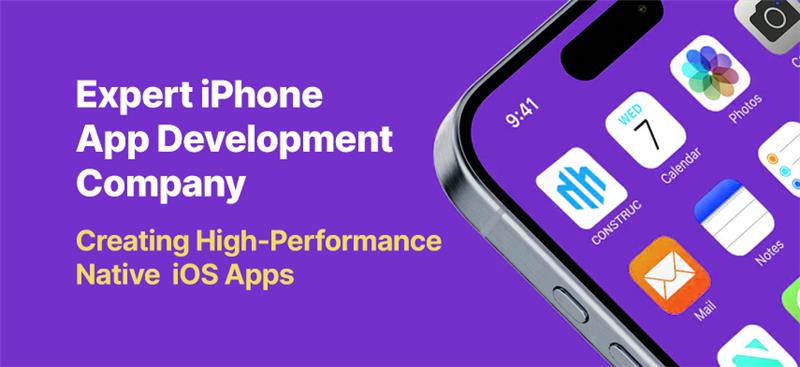A Quick Guide to Mobile App Back-End Development

The proliferation of mobile apps has brought a sea of change about how businesses operate on a day-to-day basis in the modern world. Thus, with the popularization of mobile apps, people have started focusing more on the underlying factors to get an idea about what differentiates a great mobile app from an average one.
A mobile app needs to have astute back-end architecture if the business wishes to impart an effortless user experience to its targeted audience. Right from the software stacks to the tools, there are some important factors that a business needs to take care of if one has to develop a robust back-end process.
What is Backend Development?
Backend development, in very simple words, is ‘behind the curtain’ work done during the course of app development or web development.
Mobile app backend developers are accountable for the content that the viewer sees on the CMS site and develop what is needed to make everything work in synchronization.
The coding included in mobile app backend development is not responsible for user interface or any kind of development, including it.
At the core level, the basic back-end development consists of a web server, an application server, and a database.
The backend development architecture is growth-oriented, thus you need to develop it according to the functionality and the features of the mobile or web app in which you wish to integrate it.
Why is Mobile App Backend required?
Before you begin your quest to develop a mobile app or web for your business, there are certain factors that you must consider.
- Will your app require systems to save the information added by the user?
- Will it require user authentication or admin driven configuration personality?
- Will it display the data based on user behavior?
If the answer to all the questions mentioned above is affirmative, you require an adequately structured mobile app backend framework and a web framework. A typical back-end framework works on the MVC model that is Model, View, and Controller.
Role of Back-end app development
For everyone who is thinking about why mobile app backend holds such a prominent position in mobile app development, here is an overview.
Strategy
To turn your mobile app ideas into reality, you need to first develop a strategy at the backend. Do a thorough research of the market and the competition, shortlist the targeted audience, define the objective, and select the right kind of platform on which you wish to launch your app.
Design
The UI/UX design process ensures that the app is appropriately functional, aesthetically correct, and easy to use. With a strong app backend, the architecture, workflow, style guides, etc. of the app are synchronized.
Analysis and Planning
The developers can take the help of the previous cases and analyze according to the requirement to achieve success. By doing this, they can prioritize the app requirements and what the app needs on an immediate basis. This method will also act as a catalyst in developing the MVP of the app more efficiently.
Testing
Testing forms one of the most critical aspects of backend development. Conducting user testing, performance testing, security testing, etc. is necessary to work consistently on all platforms and in all conditions.
Top Back-End Development Tools
To develop comprehensive mobile app back-end architecture, the app developers need to be thorough with the tools.
Web Servers
The mobile app backend server is used to store, process, and deliver the pages to the end-users. The communication is carried out on HTTPS. Also, the delivered pages are mostly HTML documents that include style sheets, scripts, and images other than the text content. Web servers are essential for web developers if they wish to host any website.
In general, web servers come in a package of internet and intranet programs that are used for downloading the request for FTP files and publishing the web pages.
Some of the leading web servers for back-end development are:
- Apache Tomcat
- JS
- Lighttpd
- Apache HTTP server
- NGINX
Frameworks and Languages
If you are thinking of developing software for the back-end, you are bound to work with multiple programming frameworks and languages. A programming language as a whole is the superset of all the scripting languages like Python, PHP, Java, Ruby, etc. which can be used for writing and implementing the instructions.
The languages and frameworks are libraries that have pre-written codes that can be used by the backend developers for developing the mobile app backend architecture for reference as per their requirements.
Performance testers for Website
The attention span of the modern-day viewers is less than that of a ‘Goldfish.’ Thus, it becomes essential for the dedicated web developers to decrease the website’s loading time to as low as possible.
Even the minutest of the delay can annoy the viewers and take them away from your website. Thus, care should be taken while building the web or app project, and efficient backend development testing tools such as Full page load tester and Google Page Speed Insights must be used.
Platforms for Microservices
The Microservices technique is used as a variation for service-oriented architecture and is characterized by applying and structuring a bunch of loosely coupled services. This type of architecture has lightweight protocols and fine-grained architectures.
Due to this architecture, the modularity of the app back-end can be enhanced, making the design application more natural to build, understand, and test in the future.
In addition to this, the Microservices architecture renders continuous deployment and delivery.
How to handle the Security of the APIs of Back-End App Development?
For a secured API, it is necessary to have a strong SSL as the base of the security. Moreover, for in-depth knowledge and proper deployment of the security standards, you must consult with a leading mobile app development company. The app development firm will ensure that all the safety measures are taken care of and are implemented in adequate proportion.
The two main pillars of security of APIs for back-end development are API token integration and authentication. You should consider consulting an expert mobile app development company for implementing the security of the APIs.
Popular Technology stacks for Back-end App Development
As we have seen earlier, a majority of the open-source options for back-end development employ an MVC pattern. Here are some of the widely used tech stacks that will help you develop robust backend development architecture.
Google Firebase
Google Firebase allows faster development of the applications. Several essential features that are necessary for back-end development can be accessed quickly and executed in a faster manner.
Django
Django is nothing but a programming code for Python, as Python is one of the most popular languages for web applications and data. Moreover, you get access to a large developer community that can guide you in any difficulty during the development process. Python renders explicit and beautiful codes so that backend app development is carried out in a hassle-free manner.
In addition to this, the vast library that Django brings makes the work of the skilled developers relatively easy and gives them an environment to develop a secure application with a robust back-end.
Ruby on Rails
Ruby on Rails, like Python, has a large developer community, and its framework has been developed over 10 years. The third-party libraries provided by Ruby on Rails (RoR) blends in nicely with the ever-changing modern-day technologies and help developers in the process of mobile and web app development.
Node.JS
Node.JS is part of the MEAN Stack coding language and is popularly known as Node. Working on the MVC pattern, this framework helps in transforming and escalating the process of web and app development, emulating the event-driven model.
Signing off
It will not be an overstatement if we say that app backend development is the foundation of mobile app development, and thus, it becomes essential to do it correctly.
The mobile app backend architecture must be pre-decided, keeping factors such as the platform, targeted users, and desired functionalities. Back-end technology includes a lot more than just programming languages.
Author Details:
 Bio: Ashish Parmar is the CEO of Prismetric, An IT Outsourcing Company. An enthusiastic entrepreneur, interested to discuss new app ideas, rich gadget tricks, and trends, and admires signature tech business styles to readily embrace. He enjoys learning modern app crafting methods, exploring smart technologies and is passionate about writing his thoughts too. Inventions related to mobile and software technology inspire Ashish and he likes to inspire the like-minded community through the finesse of his work.
Bio: Ashish Parmar is the CEO of Prismetric, An IT Outsourcing Company. An enthusiastic entrepreneur, interested to discuss new app ideas, rich gadget tricks, and trends, and admires signature tech business styles to readily embrace. He enjoys learning modern app crafting methods, exploring smart technologies and is passionate about writing his thoughts too. Inventions related to mobile and software technology inspire Ashish and he likes to inspire the like-minded community through the finesse of his work.






